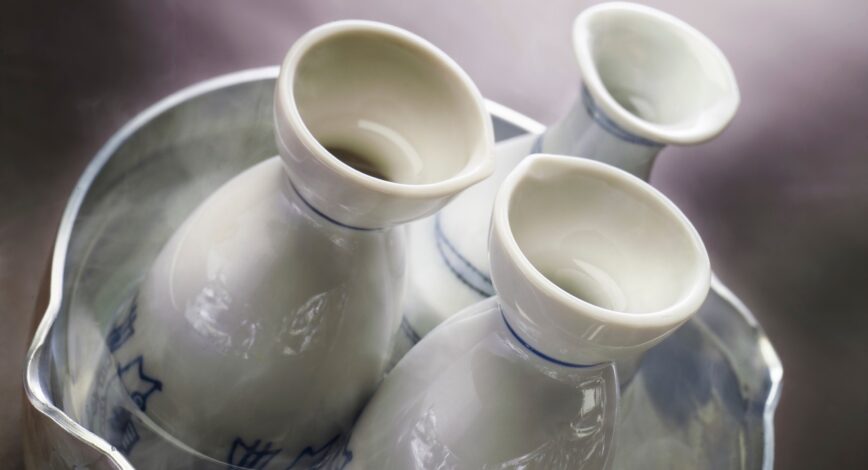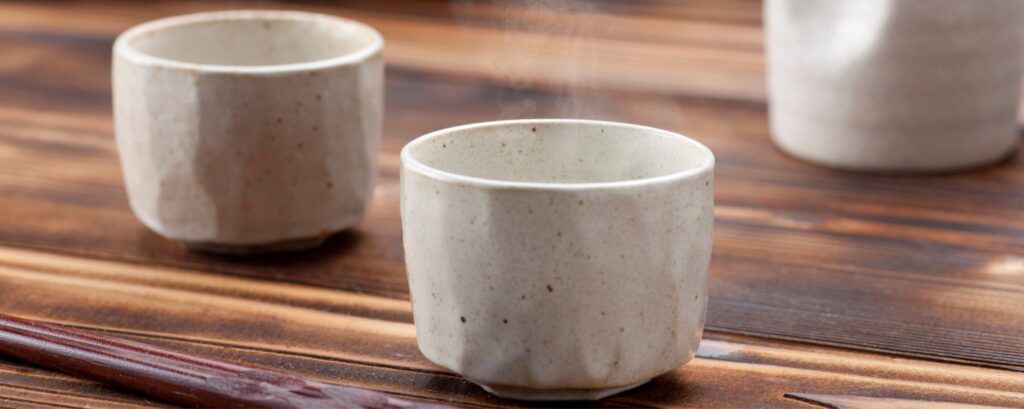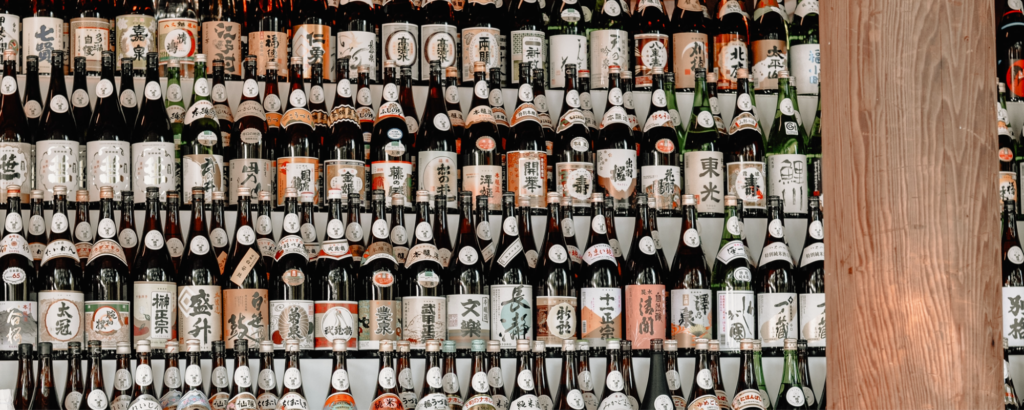
Sake
How to warm Sake – Change in temperature, flavor, texture
One of the features of Sake is that it offers various charms in different temperatures. Warmed Sake has unique names according to its temperature. Let me explain the specification and charms of warmed Sake.
Temperature variations within Kanzake

The term ‘Kanzake (燗酒) is a general word used for warmed Sake.
Here are the specifications for more precise temperatures and characters:
30-35℃: Hinatakan: soft and lightly emit the scent
35-40℃: Volume is increased, and emits mild scents of rice and Koji.
40-45℃: Concentrated sharper scent
45-50℃: Dryer flavour with a sharper scent
55℃ and above: Dryer and scents get open
Keep it in mind that the boiling temperature for alcohol is 78 degrees Celsius. Once it reaches the temperature, the alcohol gets evaporated and Sake loses its original flavour. Therefore, it is recommended to warm Sake at highest 50 degrees to avoid the evaporation and loss of flavours.
How to make Kanzake?

Warm in a pan
Boil water in a pan, and wait till it gets boiled. The water height needs to be the similar height as the dent of the Sake vessel. Place the vessel into the hot water and warm it. The estimated boiling time is as follows, but adjust it according to the warming speed of the content.
A vessel of 180ml,
for Netsukan temperature, boil for 3 minutes
for Nurukan temperature, boil for 2.5 minutes.
How do we know when it is ready?
- Touch the bottom of Tokkuti, Sake vessel. If it is pretty hot and you can still touch it, that’s the right temperature.
- Look at the surface of Sake inside Tokkuri. If you can see ‘Nibue’, where the surface of liquid rises up to the spout of the vessel, it is the right temperature.
- Alternatively, if you have a thermometer for Sake, ‘Okan-meter’, it is easy to check the temperature by placing the thermometer into the vessel.
Warm by microwave
When you use microwave, set the power to 500W and follow this:
Pour Sake into a vessel from bottle, and place it in the microwave
A vessel of 180ml,
For Netsukan temperature, warm for 60 seconds
For Nurukan temperature, warm for 50 seconds
Make sure you circulate the contents with a muddler. When you use microwave to warm up liquid, heat transmission is not uniform and there will be a temperature gap between the top and the bottom of the contents. It is highly recommended to circulate the contents afterwards.
Sake types suitable for Kanzake and tips

Kanzake style is suitable for rich thick type of Sake, such as Junmai and Honjozo Sake.
Junmai Sake generously emits the flavours of rice and Koji. By warming it up, Junmai Sake gives a milder taste and more elegant flavour. Honjozo Sake, on the other hand, turns sharper giving a fresh finish. Ginjo style Sake has unique fruity flavours. Its delicate characters are likely to disappear by warming it up, so Kanzake style is not recommended for Ginjo. Chill it when you want to enjoy Ginjo style Sake.
Just try to be a little careful when you drink Kanzake! You are likely to feel tipsy more quickly than drinking Sake of normal temperature because the temperature of Kanzake is similar to that of human blood.
Enjoy each sip slowly and feel mindfully your body warming up from inside. In addition, make sure you prepare water on the side. By drinking a sip water in between, the circulation of alcohol gets slower and you are less likely to have a hangover.
To sum up, by warming Sake, you will be able to find various characters of Sake which are hidden or not prominent at cold / room temperature. Sake is rich in varieties and show different faces according to the temperature and serving styles. Try Kanzake on a cold winter
day and you might find new characters of your favourite Sake!
ikki is looking for a partner who can post your knowledge or activity on our media. If you are interested please contact us through CONTACT page.







